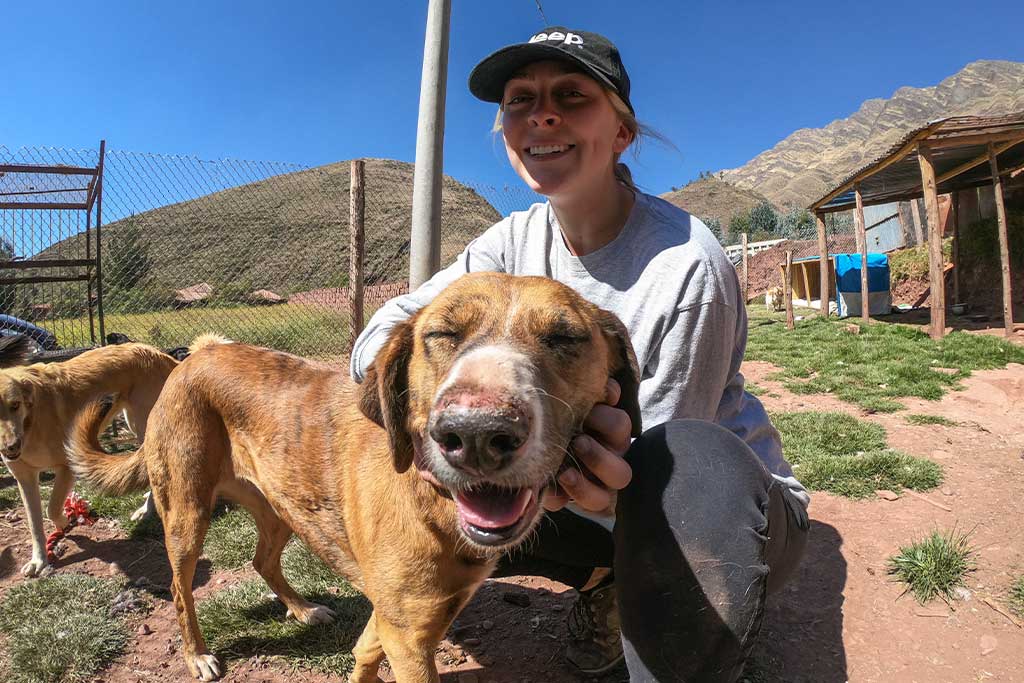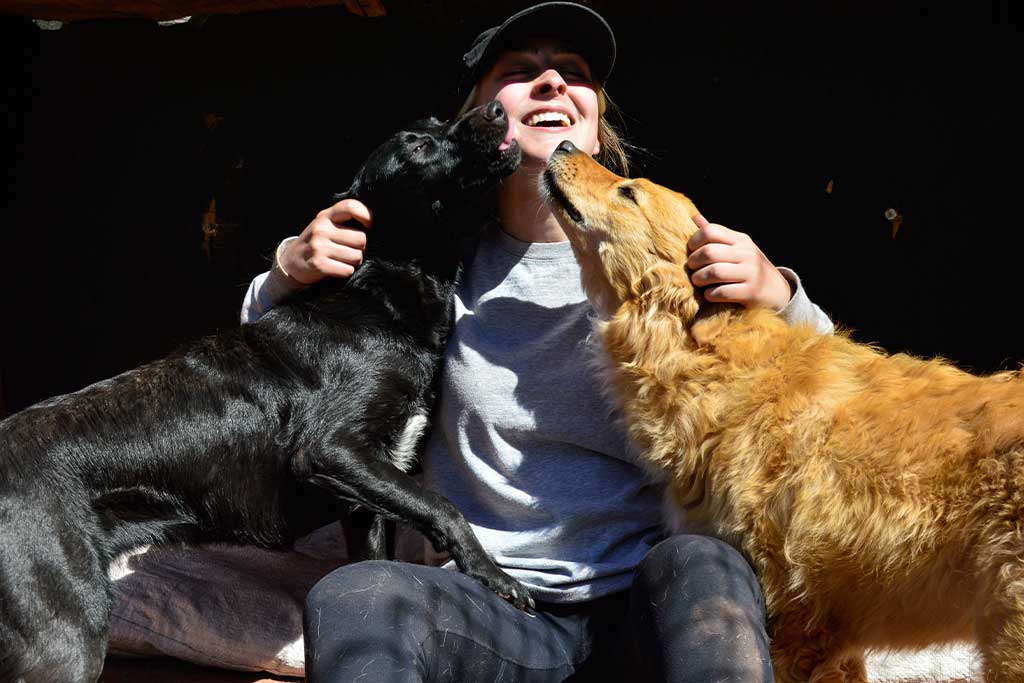I grew up riding horses and raising chickens and goats on my parents’ farm. We had at least two-house cats at any given time, and our dogs roamed the property. Animals have always been a natural part of my day-to-day life, but it wasn’t until I got older that I realized they could also become part of my career. Animals are too often innocent victims of maltreatment, and I want to make improving their overall care part of not only my personal but also my professional life.
I was bound for a veterinary medicine program in the fall, but before I began my undergraduate studies, I wanted to enrich my in-field knowledge. Textbook models and anatomy tests are more meaningful when you have real-life experiences as a reference for what you are learning. So, I began searching for summer internships in veterinary science; that’s how I found Maximo Nivel. Before perusing their program options, I hadn’t thought of doing an internship in Latin America.
However, due to a combination of cultural norms and limited resources, animal rights are a persistent issue in developing countries. Because of this, a veterinarian becomes responsible for educating the community about how to better care for its animals as well as offering standard medical services. These cultural barriers to high-quality medical care are what made me ultimately decide to intern in Peru.

I could offer much-needed assistance in an understaffed and underfunded clinic, all while gaining practical experience in my prospective field. I told Maximo Nivel about my interests and professional aspirations, and in turn, they placed me in a veterinary clinic in Cusco. I was able to work alongside a licensed physician, and I learned a lot about the cultural differences surrounding animal ownership and treatment in Peru, as well as medical examinations and procedures.
My Spanish also improved immensely during my month in Peru, which will be a huge professional asset in the southwestern United States where I’m from. The doctor that I worked under spoke little English, which motivated me to learn veterinary vocabulary very quickly. I had to understand which instruments to hand her during medical procedures and how to care for the animals that were being monitored at the clinic. I also helped keep records of appointments for which the entire database was in Spanish.
I was even able to practice my Spanish writing skills on the clinic’s Facebook page. The veterinary office uses social media as a platform for advertising its medical services, and it also posts pictures of rescue animals that are up for adoption. In addition to offering actual medical treatment, the physician who mentored me was very focused on making Cusco a more loving community for its animal population. As an animal lover, some of the things I saw in Peru were hard for me.

When I went to buy groceries on Saturdays, I would walk through an informal pet sale strewn across the train tracks. Puppies and kittens were crowded into oversized shopping bags and sold like toys. It was also commonplace to see packs of up to 30 street dogs roaming around in search of food. However, this reminded me that the rights of animals are not a priority in every culture, and that the relevance of the entire field of veterinary medicine needs to be advocated for in developing countries.
I was privileged to get a glimpse of the animal care industry in a country other than my own. Animals are everywhere, so it was important that I develop a more global perspective of their care. And at the clinic where I worked, I was glad to see that, for the staff, prioritizing the humane treatment of animals superseded cultural misconceptions and negligence. The veterinarian and her assistants put a lot of effort into educating pet owners about general care, nutrition and training.
I got to help them with this outreach, as well as assisting with the more technical side of looking after animals. The vet’s office offered many services that I was able to help with ranging from simple baths and flea treatments to more serious emergency surgeries. The clinic also offered scheduled cesarean sections, dental care, different types of body scans, vaccinations, and spay and neuter procedures. I learned a lot from simply watching, but I also helped as much as my knowledge and training allowed.

During consultations and treatment, the vet would walk me through her process so I knew what she was doing and why she was doing it. I got to watch her administer anesthesia, which I had never seen before. I was also trained to prepare animals for surgery and monitor them during their recovery. I was very privileged to work under a professional veterinarian who focused on feline and canine health. Someday, I hope to open my own practice to provide quality care for household pets.
Gaining exposure to various forms of treatment and medical procedures has made me feel more confident about starting my university program come fall. I was also required to give an oral presentation in Spanish at the end of my internship. And even though it was nerve-racking, summarizing my experience gave me the opportunity to think about what I had learned, as well as how the clinic could be better serving its community.
Education sparks sustainable change, and I think it would be a huge step forward for Cusco if veterinary clinics became more involved in the community. I know there are various financial and cultural barriers impeding this type of work in Peru. However, running vaccination or spay and neuter campaigns in local neighborhoods could foster a more responsible culture surrounding animal ownership. But, no matter where you live, there will always be animals in need of medical care, and I look forward to continuing on a path to meet that demand.
